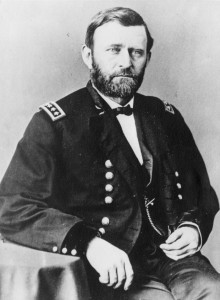Confederate and Federal (Union) Forces
Depleted militarily and with resources eroding rapidly, Lee’s Army of Northern Virginia had faced their own “Valley Forge” during the winter of 1863-1864. The Federal Army of the Potomac, having achieved little during the Bristow and Mine Run campaigns in late 1863, but in a superior position strategically, spent the winter in the Culpeper area eagerly awaiting spring. In February 1864, U. S. Grant came east. Promoted to General-in-Chief of all Union Armies, plans were developed for a spring offensive which would defeat Lee’s army and carry the Federal forces to Richmond, thus winning the Civil War in the Eastern Theater. Grant would maintain his headquarters in the field with Meade’s Army of the Potomac and he would set all of the armies moving simultaneously, hindering Lee’s ability to regroup forces from one troubled area to another when required. The Confederacy began facing a desperate reality: its time was running out. If they were to prevail or gain a negotiated peace settlement, extraordinary measures – generally termed “Black Flag Warfare” – would become increasingly necessary. Northern Virginia and Stafford receded into “rear areas” of the conflict, but would continue to play roles in the final phase of the war.
The picture is of U.S. Grant. We do not know if he was ever in Stafford, but we do know, in May of 1864, he used Belle Plain as his main supply base while rebuilding Aquia Landing. As Grant pushed toward Richmond, he abandoned Aquia in favor of supply depots farther south.

